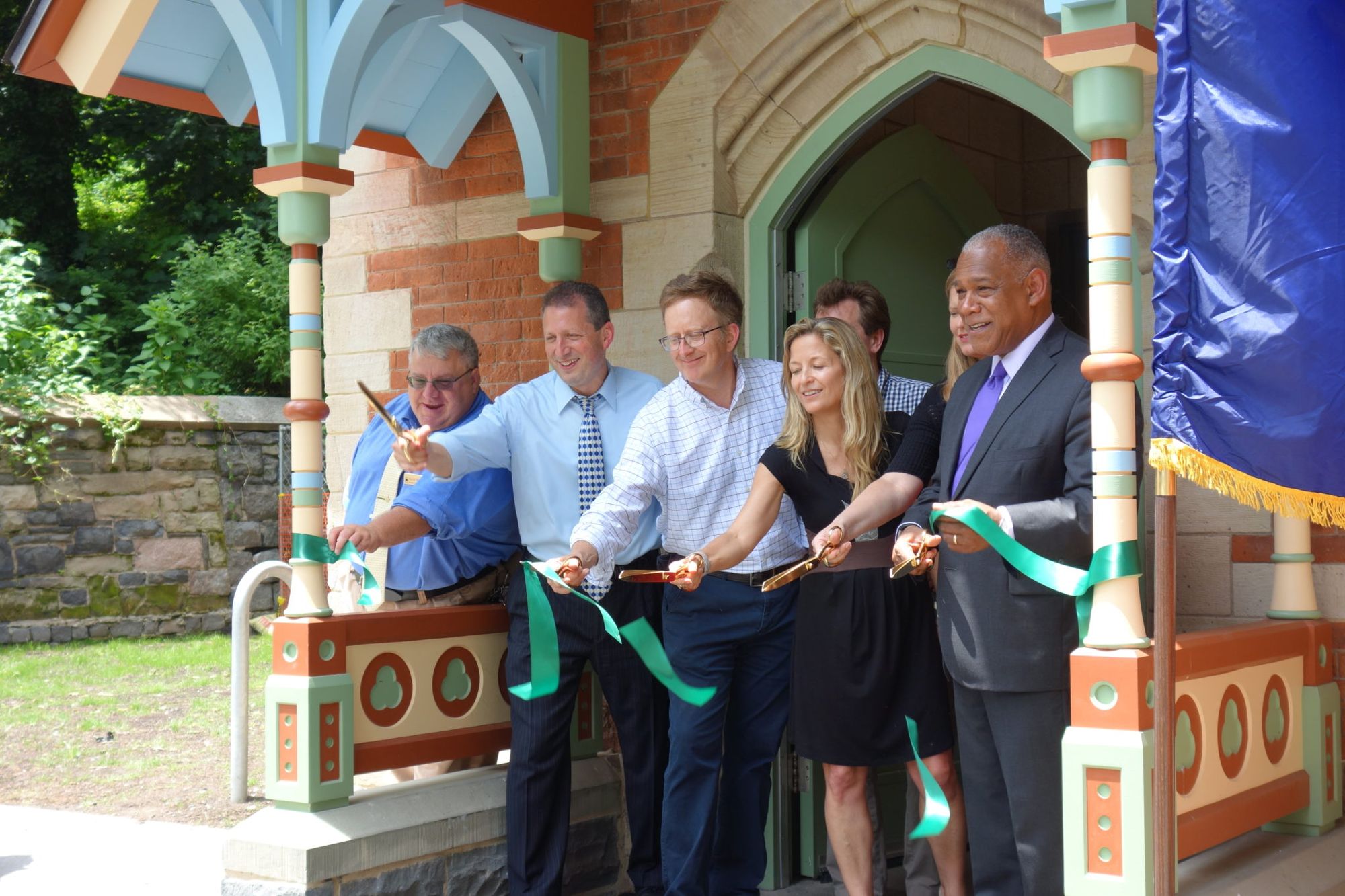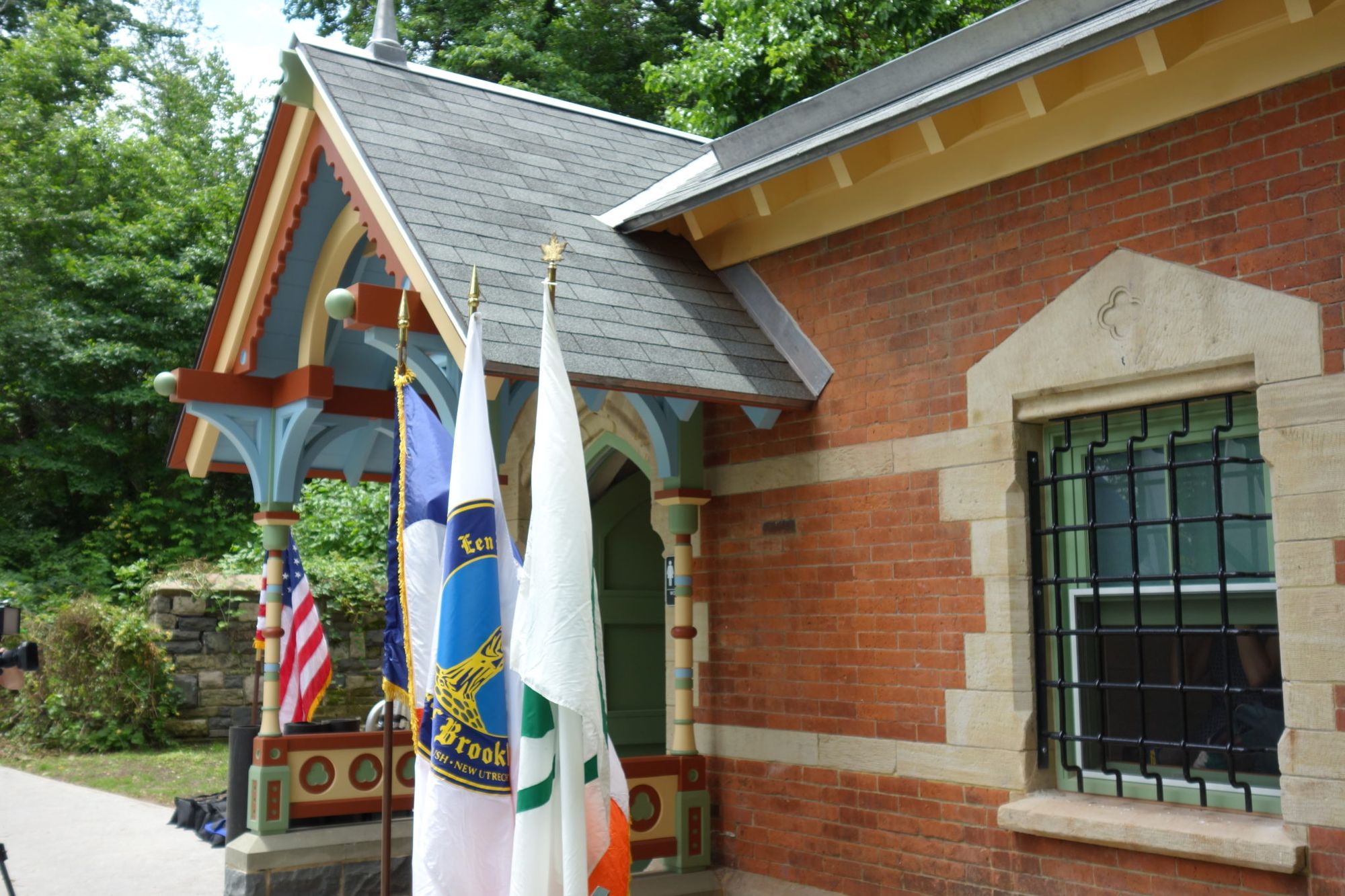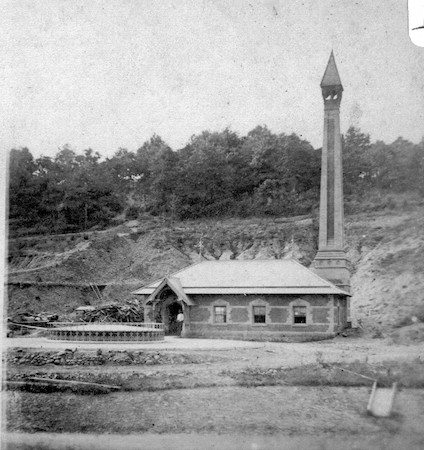Century-Old Wellhouse Reopens As NYC Parks’ First Compost Restroom


City officials are helping Brooklynites do their duty for the environment.
Yesterday, the city’s first public composting toilets opened in the historic Prospect Park Wellhouse after a $2.34 million renovation. The comfort station will convert human waste into usable fertilizer while reducing the city’s environmental impact.
Built in 1869, the Wellhouse, the park’s last building designed by Frederick Law Olmsted and Calvert Vaux, pumped well water into the lake and other man-made waterways. But after the park hooked up to the city’s water supply in the 1900s, the brick structure fell into disuse.
And now, the building is again serving as a site of innovative infrastructure, marrying the city’s insatiable need for more public restrooms and the park’s commitment to sustainable projects.
The $2.34 million renovated restrooms have been a long time coming, funded by City Council Member Bill de Blasio whose two-term stint in the 39th District began in 2002. The historic reconstruction matches century-old photos and required a mechanical and electrical overhaul to bring the building up to code.
“We wanted to handle [the renovations] in a delicate manner because the building has such a unique history,” said Sue Donoghue, president of the Prospect Park Alliance.

Maintaining historic accuracy — and rebooting the 100-year abandoned building — bumped up the cost, but the long-term benefits outweigh the costs, Donoghue said. “In all of our capital projects we’re looking to do what’s most sustainable — address stormwater runoff and drainage.”
The four toilets — three for women and one for men — will each spin 3 ounces of foam to flush the bowl instead of the 1.6 gallons used in a normal flush. This adds up to a savings of 250,000 gallons of water per year, said the Alliance.
Composting toilets are designed to transform waste into organic matter through a mixture of nitrogen, carbon, and oxygen flow, to allow bacteria — and in this case, worms — to convert the poop into safe, usable compost.
And unlike the park’s port-a-potties, throne-sitters shouldn’t smell a thing because air will funnel through the pipes and to a rooftop vent.
After doing your duty for the environment, waste funnels down the pipes into basement tanks, where worms break down the solids at such a high rate that the tanks can stay sealed for 10 years, said Prospect Park Alliance Architect Alden Maddry.
But as of now, the city won’t be able to use the end-product due to state laws prohibiting its use — except as fertilizer on farms.
“Other states allow it,” said Maddry. “After only 2 years all the pathogens will have been eliminated, it’s benign material like fertilizer. Hopefully, in the future, NYC will get with the program.”
The building’s water drainage is also environmentally sustainable, with sink water and floor drains irrigating the garden landscape in a greywater garden system.
“In many ways, it’s less expensive to make a long pipe run to a traditional sewer system,” said NYC Sanitation Commissioner Kathryn Garcia.
Though poo-pooed by some urbanites, compost is slowly becoming more mainstream.
Many Brooklynites have compost bins in their backyard, said City Council Member Brad Lander. Others store scraps in their freezer to dump at community garden bins, and even more neighbors got brown, curbside compost bins this year as part of the DOS’s organics waste program expansion.